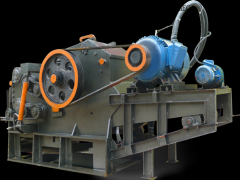Biomass Energy Use Situation across East Asia
With RPS (Renewable Portfolio Standard) implemented last year South Korea's thirteen power utilities must now deliver two percent of their generated energy from renewables and progressively to ten percent in the coming decade (2022). Compared to other renewables such as wind, solar, hydropower - Biomass is expected to deliver the bulk of the clean energy capacity estimated at 50-60 percent.
Whilst in Japan discussion of nuclear power continues with solar power expected to dominate the renewable energy spectrum. When feed-in tariffs (FiTs) for biomass power kicked-in mid last year, industrial generators such as Sumitomo Osaka Cement, Nippon Paper Industries and Idemitsu Kosan Co. took advantage of the tariffs to reduce their dependence on coal with wood chips and other biomass at their power plants.

From pellet plant to power plant, get to know Kingman pellet plant projects across the world.
In order to meet the RPS mandate, South Korean government has set a target to import 5 millon tonnes of pellets by 2020, thus meeting almost75% of pellets requirement in the country. Energy and trading companies such as GS, LG and Samsung are currently actively exploring pellets import opportunities with the suppliers from Australia, Canada, US and South-East - Asia (Malaysia, Indonesia, Vietnam, Thailand, etc), and the first to take the lead is Korea Southern Power (KOSPO) with the purchase of 15,000 metric tons of wood pellets and delivery in last October.
Global suppliers from USA, Canada, Russia and Australia, wood pellets suppliers are cranking up their production supply chain to meet this emerging demand from North Asia, despite the uncertainty of how massive this demand can grow to. In South - East Asia, intra-regional cooperation and investments as well as indigenous efforts to develop the biomass sector have led to Malaysia, Indonesia and Vietnam scaling up as potential exporters of wood pellets and high calorific value biomass fuel such as Palm Pellets, EFP and PKS. Bio-Coal, or torrefied Pellet, has also evolved from R&D to commercial productions globally.
Article resource: Biomass Pellets Magazine
-------------------------------------------------------------------------------------------------------------------------------------------
News
- Small Pellet Machine Manufacturer-Kingman
- Application of Wood Pellets and Use of Biomass Pellets
- From Fossil Fuel into Biomass Pellet Fuel
- Biomass Pellet Making Machines Market
- Applying of pellet stoves for home use
- Highland pellets to build $130 million facility in arkansas
- How to deal with the blocked hammer mill
- How to Make Wood Pellets with Sawdust
- The government policy promotes the development of biomass fuel
- Market analysis of biomass pellet fuel
- Strategic positioning of renewable energy
- Biomass energy has pass through the pre assessment
- The key point of deep processing of biomass pellet
- Harbin is promoting the development of biomass machinery
- The development of biomass formation technology I
- The development of biomass formation technology II
- Biomass energy industry is now going full tilt in 2015
- Rapid increasing demand of sawdust pellet on the market
- Pellet fuel market in EU
- Chinese Biomass Energy Conference held in Beijing
- Future market development of straw pellet mill
- Peanut Shell Pellet Mill Makes High Quality Pellets
- The utilization of straw is only 5%, biomass energy needs our attention!
- Corn straw pellet machine relieves the tight supply of fuel energy
- Reasons for loose or not forming of biomass pellet mill





